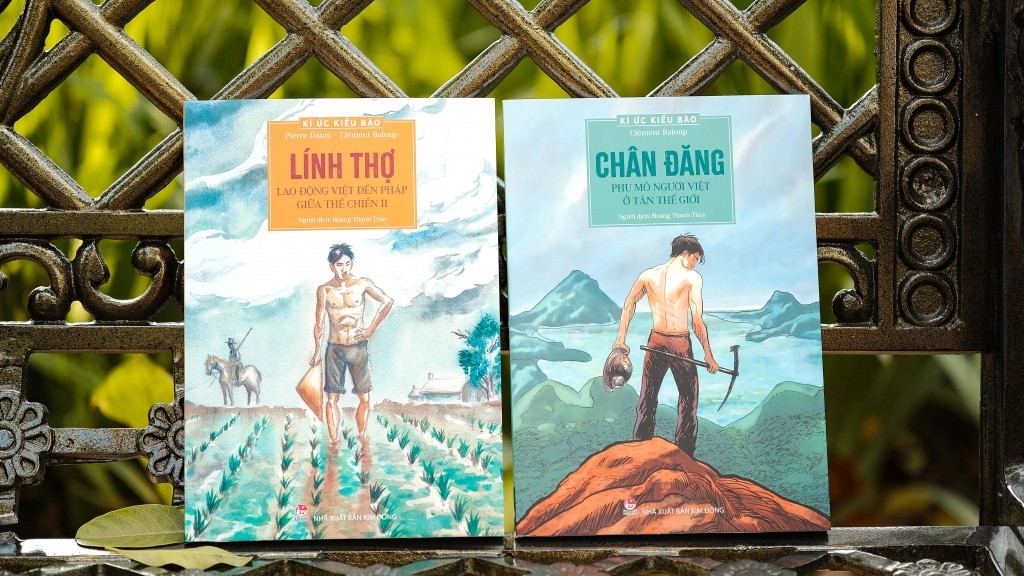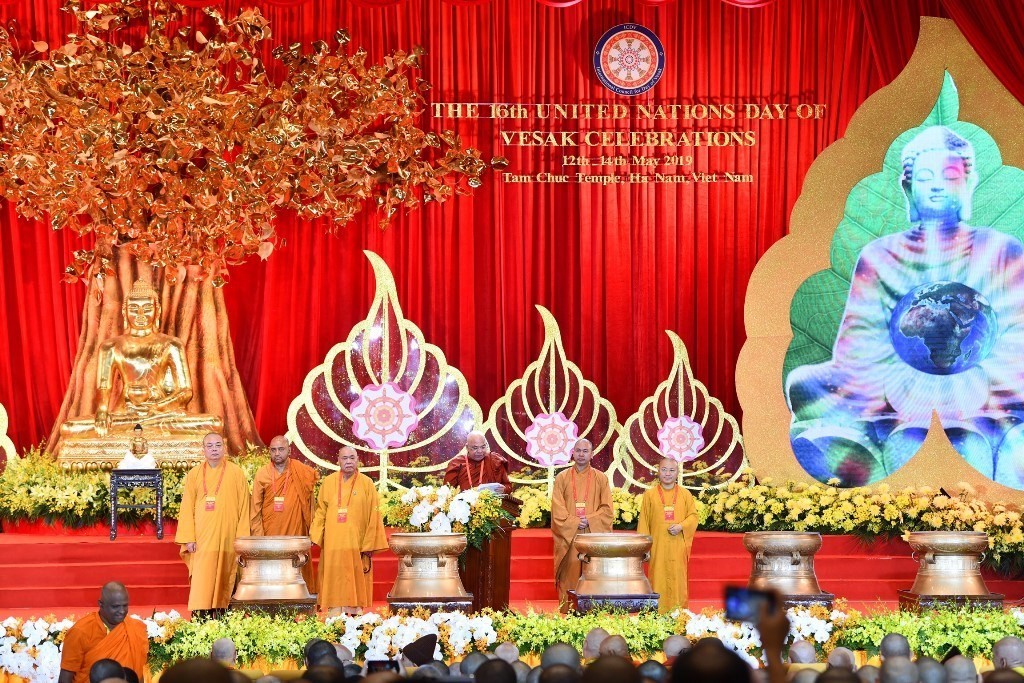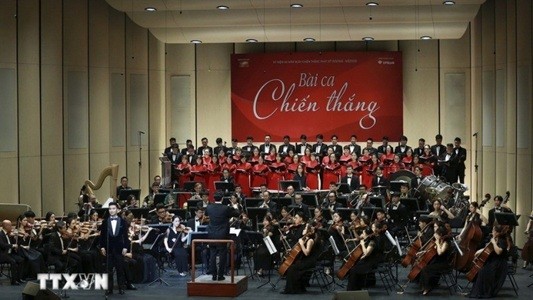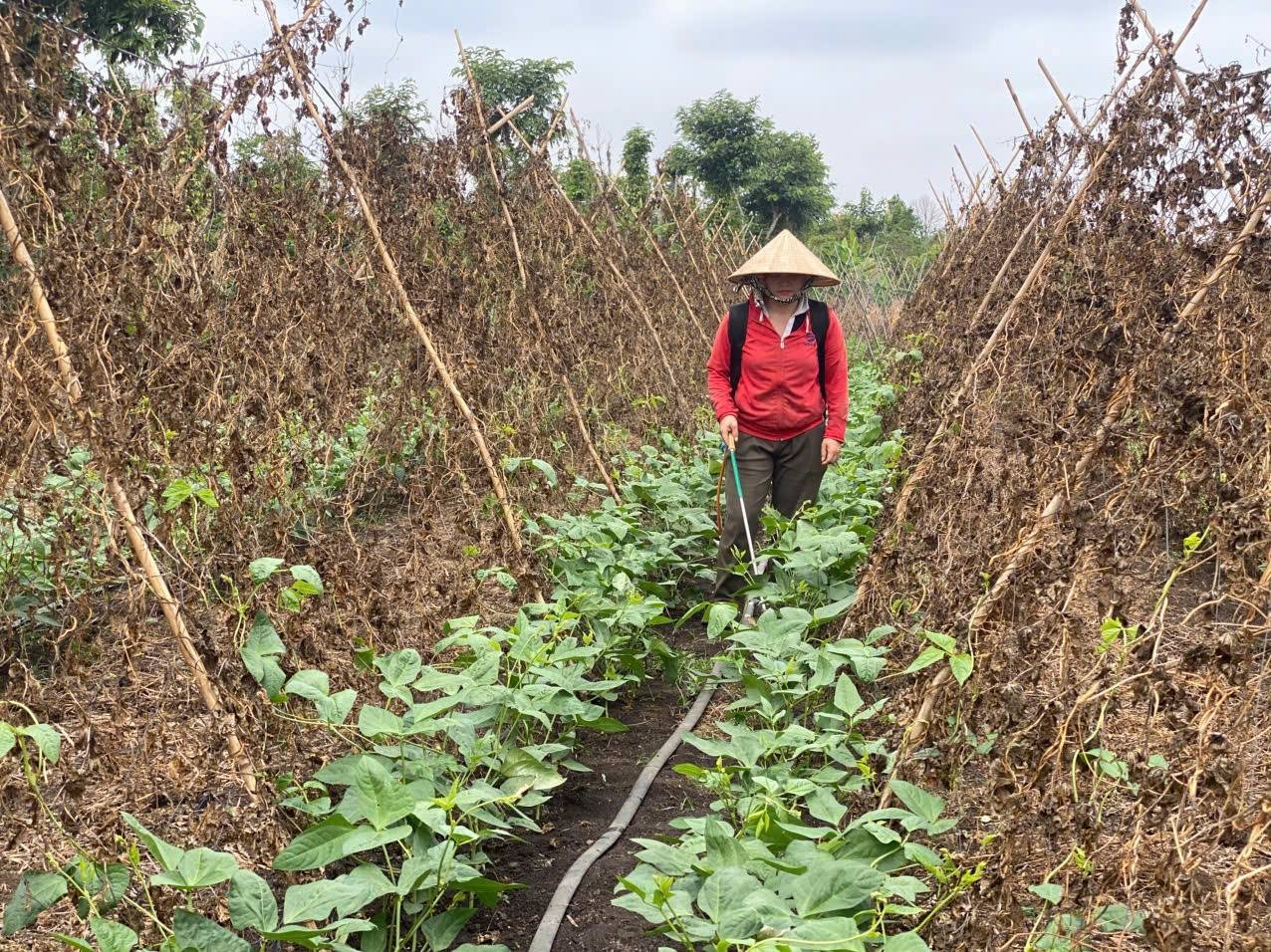A life in pottery
The name Vu Huu Nhung looms large in Vietnam’s pottery landscape.

Photo: Quang Phuc
There are perhaps no more “special” or “exotic” artists in Vietnam’s pottery scene than Vu Huu Nhung. In nearly 20 years Nhung, famous for his “Nhung Pottery” brand, has held only two private exhibitions.
“I wanted to hold my own exhibition many times but always found reasons to delay it,” he explained. “I wondered about the quantity and its uniqueness.”
His second exhibition was held in 2015, 15 years after his first in 2000. Despite the rarity of exhibitions, the name Vu Huu Nhung has a place in Vietnamese pottery art that no contemporary artist can match.
Born in 1975, he is considered to have revived an entire pottery village that had been forgotten for decades - the traditional pottery village of Phu Lang in Bac Ninh province.
Keen to retain the local craft tradition of his home village and at the same time add a modern touch, Nhung created a completely new range of Phu Lang products that focused on decorative items like ceramic paintings, murals, and sculptures. His works were successful in keeping the soul of Phu Lang pottery alive by using the visual and artistic values he acquired at university. A new generation of local young people have followed in his footsteps and created brand names such as Thieu’s pottery, Ngoc’s pottery, and Tai’s pottery, whose items are bought both in Vietnam and overseas.
“A person who re-builds a traditional pottery village”
Born and raised during Vietnam’s subsidy period, Nhung struggled against many difficulties. His family was poor, and there was never any guarantee that the ceramics business could provide a livelihood. Products were often sold at the village market at dirt-cheap prices. As the oldest child in the family, Nhung had to go to school and also help his mother with the housework, as his father had passed away at an early age. After finishing secondary school, he stayed in the village and worked for a few ceramic makers to earn a living, but his earnings only covered the essentials.
Through hard work and an aptitude for painting, Nhung was admitted to the Faculty of Sculpture at the University of Applied Industrial Arts in 1994 and graduated in 1999; one of only a few university graduates from Phu Lang. Bat Trang pottery village in Hanoi was quite active at that time, with fully developed ceramic manufacturing and trade, so Nhung decided to find a job there so he could learn more about design, kilning, customer tastes, marketing, and the development trends of traditional products. He worked there for six months as a potter and product decorator.
.jpg) |
Photo: Quang Phuc
The talented artist always reflected upon the special characteristics of Phu Lang pottery while working in Bat Trang. In 1999, he returned to Phu Lang and began experimenting with a completely new method: applying painting techniques and modern sculpture to traditional ceramics. He discovered the close relationship that exists between sculpture and pottery and he wished to explore this further.
Staring with a little of his own money and some loans, Nhung began to work on making his ideas come true by producing ceramic art using his own designs. In addition to round pottery products, such as jars and bottles with unique designs, he began to design vases and pots with enamel colors. They were not accepted enthusiastically, however, as they were not based on customer demand.
A stroke of fortune came his way in late 1999, when a Vietnamese Australian returned to his home village, fell in love with Nhung’s ceramics, and paid a large sum to buy all of the 100 products Nhung had made. A fifth of these were then resold in Australia, at a substantial mark-up. After this successful sale, Nhung and a friend of his decided to open a pottery shop in his hometown, and they hired ten employees. Nhung by that time was both designer and instructor of the other potters, focusing on decorative pottery.
A life in pottery
“All of Nhung’s works stem from his creativity and from a combination of modern and traditional knowledge,” one art critic said. “What makes him successful also makes him unique.”
While using clay as a basic material, he adds soul to create art. The key to Nhung’s creativity lies in the ways he expresses his ideas within the techniques of traditional Phu Lang ceramics. He has the uncanny ability to produce various works of art that are reproductions of other natural materials, such as wood, stone, fabric, rattan, bamboo, flowers and leaves, with various ceramic appearances and formats.
“These products are consciously created using traditional forms and emotion, but sometimes they are also produced by chance,” the artist himself said. Each item is a work of art, conveying his constant initiative. He’s received many art awards for his talent.
In 2000 he won his first ever award, from the Ministry of Culture, Sport and Tourism. He also received a consolation prize for a piece entitled “Comrade in Arms”, made from terra-cotta. The artwork was then purchased by the Vietnam Fine Arts Museum for its ceramic collection. Further awards and recognition came. In November 2001, he received the “Artisan with Gold Hands” award from the British Council at an exhibition co-organized by the Sweden-Denmark Cultural Assistance Fund.
In early 2003, with his “Harvest Festival” and “Soil Flower” artworks, he received the top prize of “Vietnam Star” at the Vietnam Traditional Handicraft Contest. He also won third prize with his “Meeting” artwork at the National Sculpture Exhibition 2003, which was subsequently selected by UNESCO as a decorative item in its head office. In the same year, Vietnam National Television selected Nhung as the subject of a documentary about Phu Lang pottery village, entitled “A person who re-builds a traditional pottery village”, marking the peak of his career at the very young age of 28.
A choice
Immersed in success and a flood of prizes, the talented artist decided to expand his shop to 30 employees, working with and guiding them in each step in the production process. Almost all of his products were sold at the shop, though later on he also received orders for exports. In March 2004, Nhung founded a pottery company called North Star with 100 employees, and some products found their way to the US and Japan.
Then, faced with ups and downs in life and changes in the market and customers’ tastes and demand, he had a choice of two options: continue to engage in the mass production of pottery, or only create top-notch, unique fine art with his own imprint. His predicament saw him lose confidence for a long time, and he “felt unhappy about everything.”
Feeling the role of “boss” to be outside of his character, he left the production industry and returned to his university to become a lecturer. “The decision to get out of business also meant an end to a great income and the end of my pottery,” he said. “Once again I felt a loss of confidence in which direction I should pursue.”
There used to be hundreds of potters at Nhung’s company. His success, though, had a positive effect on the local pottery business and many others began following his lead. Ceramic products were not only purchased within the confines of the village but also sold around the country. Not only household items such as jars and vases but also other fine artworks for home décor were exported in large volumes. Some sophisticated items with the imprint of Vu Huu Nhung were snapped up by local and international collectors.
“After a long time doing this, I felt totally unhappy at just meeting orders and being affected by the market, which caused me to lose some of my character,” he said. “I just wanted to change.”
The talented artist is now a respected lecturer at his former university, providing invaluable knowledge to his students. His works are hard to find now, but once owned are invaluable./.
( VNF/The Guide VN )
Recommended
 Viet's Home
Viet's Home
French-Vietnamese Author Introduces Book Series "Memories of Overseas Vietnamese"
 Viet's Home
Viet's Home
Vietnam's Human Development Index Remains High
 Viet's Home
Viet's Home
Vietnam’s Mark on UN Day of Vesak Celebrations
 Viet's Home
Viet's Home
Art Program Spreads Message of Peace Worldwide
 Expats in Vietnam
Expats in Vietnam
Look Forward to New Developments in Vietnam - US Relations
 Viet's Home
Viet's Home
She Feeds the World: 8,000 Individuals Adopt More Sustainable Agricultural Practices
 Viet's Home
Viet's Home
Over 200 Valuable Documents Displayed at 'Mountains and Rivers Connected One Strip' Exhibition
 Viet's Home
Viet's Home
